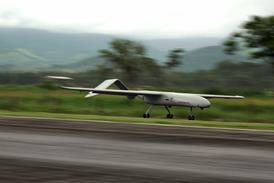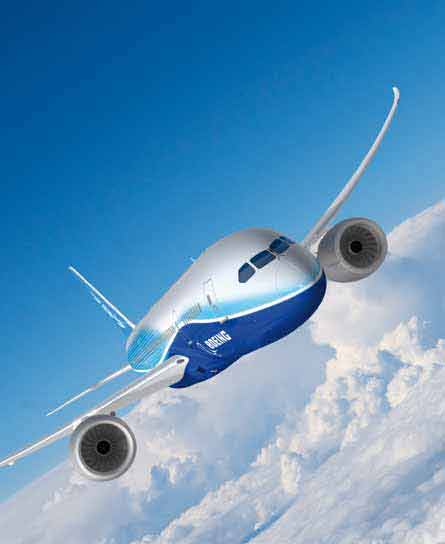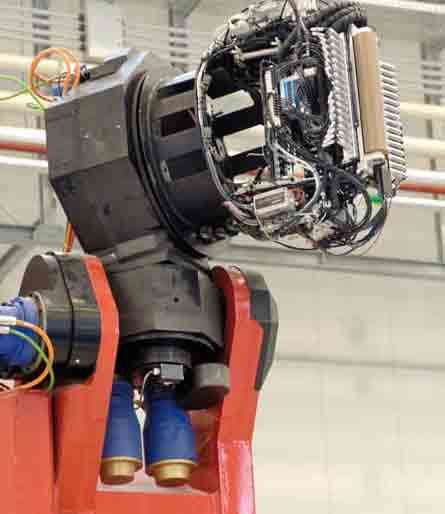Alenia Aeronautica's huge Taranto-Grottaglie site, producing Boeing 787 Dreamliner fuselage barrels, is a monument to the companies' ever-stronger links
When Appius Claudius Caecus began building Rome's Appian Way to connect the empire in 312BC, he could never have guessed that, more than 2,000 years later, an Italian company near the end of this famous road would be building major parts of an airliner designed to connect the world.
|
|---|
"The new business model of the 787 has dramatically changed the relationship in the supply chain" Vincenzo Caiazzo, Alenia North American COO |
Alenia Aeronautica's Taranto-Grottaglie site for producing fuselage barrels for Boeing's 787 Dreamliner is located by the "heel" of the Italian boot, where the Appian Way ends. It is also something the ancient Romans would almost certainly have approved of. Colossal in scale, and thoroughly 21st century in manufacturing technology, it represents a suitably imposing platform for Alenia to build on its close relationship with Boeing and its commercial line.
These links, forged with Boeing over the preceding decades on fuselage and other structural assembly work for the 767 and 777 programmes as well as the now discontinued 717 and 757 lines, were already growing stronger in February 2002 when Boeing and Alenia parent company Finnmeccanica agreed to co-operate on the Sonic Cruiser.
Significant contract
As the Sonic Cruiser morphed into the 7E7, so did Alenia's contract, and within three years the Italian company was heavily engaged in the newly named 787. In August 2005, Alenia's activity in the new twinjet was again expanded to include a formal role in development and production. The contract, covering an initial order of components for 150 aircraft valued at about $1.1 billion, was described by the Italian manufacturer at the time as "one of the most significant contracts ever secured by Finmeccanica in the civil aircraft business".
The original agreement covered the production of the Section 44 and 46 centre and aft fuselage barrels and the horizontal stabiliser, and the latter's pioneering design was also completed and tested by Alenia. The company's structures laboratory in Pomigliano d'Arco, near Naples, was signed up to perform static and fatigue testing on the horizontal stabiliser, which was to be built at Alenia's Foggia facility. The deal also called for Alenia to perform large-scale development and production programmes at its Taranto-Grottaglie and Foggia plants.
The contracts kicked off a €500 million ($640 million) investment by Alenia over the next three years, most of it going into developing the new Grottaglie site and its state-of-the-art composite materials manufacturing system. But the knock-on effect of the 787 goes well beyond this region and its olive-oil plantations, says Alenia general manager Antonio Perfetti. "It is changing the whole of Italian industry as part of the undertaking to meet the needs of this aircraft. To start with, we had up to 180 people working with Boeing in Seattle and being involved in the development to help the start of the programme."
Alenia was also spurred to extend its 787 involvement beyond Italy, in particular to set up Global Aeronautica, a joint venture with Vought Aircraft Industries, which will be responsible for pre-assembly of the fuselage sections. The two companies will, between them, manufacture the central and rear fuselage sections and the stabiliser, which together make up 26% of the 787's structure and 60% of the fuselage itself.
|
|---|
The head of this automated tape placement machine will soon be working around the clock |
"The new business model of the 787 has dramatically changed the relationship in the supply chain," says Alenia North America chief operating officer and Global Aeronautica board chairman Vincenzo Caiazzo. "Today Boeing is changing itself into a large-scale integrator and the suppliers are expected to be vertical partners.
"These must be capable of defining, producing and assembling the complete system. Global Aeronautica was formed to bid for this assembly activity. which in the past was not performed by either of the two companies involved."
Strategic ambitions
David Brigante, Alenia vice-president in charge of commercial aviation accounts, says the new relationship with Vought is not only vital to the 787, but also forms a key part of Alenia's longer-term strategic ambitions. "We always had the idea of having an assembly area near the customer," says Brigante, who adds that after rejecting ideas for opening up a standalone Alenia site in the USA, it then considered buying a part of Vought from Northrop Grumman. Talks over this possible link resulted in Global Aeronautica.
"It could grow more," says Brigante, who adds that the development of the 787 "created a small Airbus between us, Vought and the Japanese". Alenia has been gradually building trust towards becoming collaborative, he says. "In the end, it's going to be better this way."
The partnership does not necessarily mean any tie-ups over future projects such as the Boeing 737RS, he says. "On the next one we are competitors." Brigante also says the investment in Grottaglie and other Alenia sites throughout Italy, as well as in Charleston, underlines the company's belief in composites as the material of the future. "That's what we're betting on - the composite fuselage."
As a key partner, Alenia has also been deeply involved in Boeing's studies to increase the 787 production rate beyond the already accelerated 10-a-month goal. "We are trying to understand how to react to this market," says Brigante. Initial studies examined several rate growth phases to as many as 14-16 a month, but were slowed in mid-2006 when Boeing turned its attention to dealing with more pressing development matters, such as combating weight growth.
The decision to back off from an early rush to higher sustained rates was mostly greeted with relief by the vast numbers of suppliers and partners, many of which were already faced with huge investments just to meet the baseline targets. "The Grottaglie plant is not enough," says Brigante. Although Alenia designed Grottaglie for higher rates, these were "not what we are looking at today", he adds. "It needs to grow. We have a lot of space to grow."
For Alenia, Brigante says the question is whether Boeing can sustain sales long enough for the company to recoup the investment needed to expand the factory. "Once you make the investment for a certain rate, how long is it going to last?" he asks. Alenia already plans to run three shifts at the factory, which will see employment rise rapidly from 320 people this year to 484 by 2008.
As it currently stands, this is likely to remain stable for at least the first two full years of 787 production following Boeing's decision "not to touch the first two years", says programme vice-president and general manager Mike Bair. The production ramp-up is now expected around 2010-11, with partners such as Alenia required to perform most of the new activity. "Most of it will be in the supply chain, with mandrels, tape-placement machines and autoclaves - that's where all the investment is needed," says Bair.
In Italy, construction of the Grottaglie site is now effectively complete and production is starting. The one-piece barrel (OPB) building, designed to produce the 8.5m (28ft)-long Section 44 and 10m-long Section 46, dominates the site and covers a total area of 64,000m2 (690,000ft2) - the size of 15 soccer fields.
Four variants
Ultimately designed to be produced in four lengths for the 787 family, the Section 46 will measure up to 15m- plus in length, with the exact size of the stretched 787-10 variant still to be determined. The first set of fuselage sections are due to be delivered by 747LCF large cargo freighter to Charleston in January 2007, with initial subassemblies arriving at Boeing's Everett final assembly site the following month.
The OPB building, incorporating "northern light" roofing, rises to a height of 24m, is 400m long and 175m wide. Construction involved the pouring of 50,000m3 (1.8 million ft3) of concrete, and erecting 20,000t of steel. Inside sits a 19.5 x 9m autoclave, thought to be the biggest in Europe, ready to process fuselage barrels with a cure cycle of 16h. At the centre of the 70,000m2 site is a 17 x 36m automated fibre-placement machine that wraps up to 1,820kg of composite tape around a mandrel for each Section 44.
Outside the massive new assembly site, the runway at Grottaglie has been extended from 1,800m to 3,200m to provide enough room for the 747LCF. The LCF will carry unfinished barrels to Global Aeronautica's Charleston facility in North Carolina, and is due to make initial proving flights as early as mid-December. Meanwhile, work on the first production barrels is under way. These are due to be flown to the USA late in the first quarter of 2007. Initial production of a set of OPB dummy sections, which will prove the manufacturing and assembly processes, has not yet finished.
Alenia says it has "successfully completed in its Foggia plant the pre-production verifications for the co-cured box of the horizontal stabiliser." The 19.8m-long stabiliser structure incorporates the largest fully co-cured, solid-laminate monolithic composite piece ever produced for a commercial aircraft. Initial deliveries are scheduled for the first quarter of 2007.
Stabiliser work
Guglielmo Caruso, Alenia 787 programme director, says the stabiliser work is a major differentiator for the company and its relationship with Boeing. "We can say we are also the only partner responsible for the design, build and support, as well as the static and fatigue testing of the horizontal stabiliser."
The second and fourth units off the line will be the static and fatigue items, respectively.
Source: Flight International

























